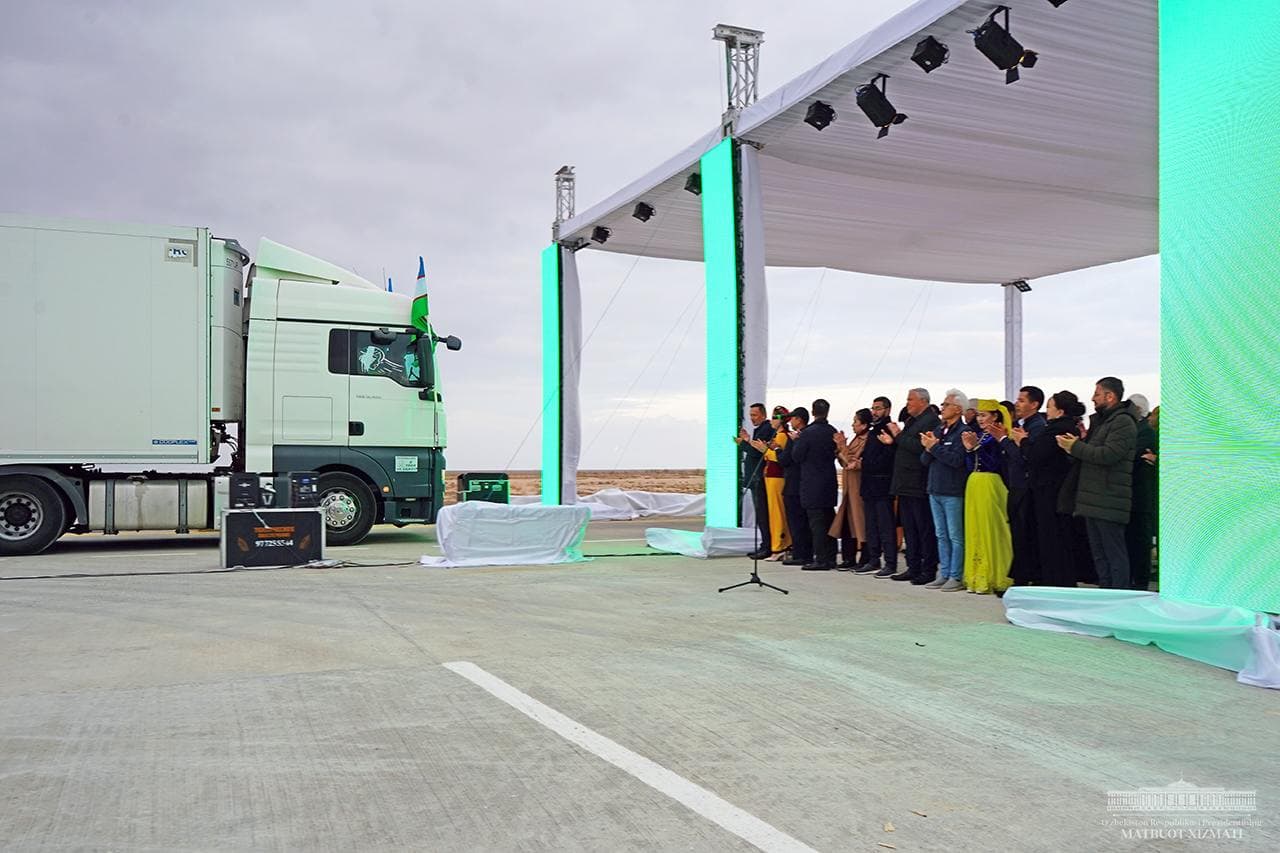New highway commissioned
2024-10-28 10:10:00 / Presentations

This road is part of a strategic highway connecting Uzbekistan with European countries. However, due to many years of operation and the sharp continental climate of the Aral Sea region, it fell into disrepair. Therefore, a project worth $323 million for its modern reconstruction was implemented.
At the ceremony, the Head of state emphasized the importance of this road.
“Now the distance of international transportation across the territory of our country will be reduced to 1 thousand kilometers, and transportation costs will decrease by 25 percent. This road will become part of the logistics network that reliably connects our country with European markets through the Caspian and Black Seas ports. Another important aspect is that the daily traffic flow on the section of the international corridor A-380 passing through Uzbekistan will increase threefold”, Shavkat Mirziyoyev noted.
The road, in terms of relations, meets world standards, ensuring safe passenger and cargo transportation.
Other sections of the international highway Guzar – Bukhara – Nukus – Beyneu were previously repaired. On February 29 this year, a new bridge was opened across the Amudarya, connecting Karakalpakstan with Khorezm. Such work makes it convenient for people to move around, increases economic activity, and gives an additional impetus to entrepreneurship development.
According to calculations, more than 200 trade and service facilities and industrial enterprises will appear along the new road. This will create 2,000 jobs at first and 5,000 more in the future. Thus, a solid foundation will be created for increasing the volume of transit and other services in Karakalpakstan by $200 million a year and the volume of exports by at least $300 million.
The lives of more than 1 million residents of Turtkul, Ellikkala, Beruni, Nukus, Khojeyli, Shumanay, Kanlykul, Karauzyak, and Kungrad districts, through which this highway passes, will change.
The President expressed gratitude to the builders and workers involved in this project, the Asian Development Bank, contractors from Türkiye, Azerbaijan, and China, and consultants from South Korea and Italy.
“Construction of roads and bridges, bringing people together, easing their worries are among the most noble deeds. In the face of road builders, we see such noble, hardworking people who have earned the blessing and gratitude of the people. Let the economic potential of New Uzbekistan grow. Let such good deeds multiply, contributing to the well-being of our people”, the Head of state said.
Participants from both ends of this 240-kilometer road – from the Kungrad district of Karakalpakstan and the customs post “Davud-ota” on the border with Kazakhstan – joined the event via teleconference. President Shavkat Mirziyoyev launched the traffic on the road with satisfaction and congratulated compatriots on this significant event.
Representatives of government agencies and the public took part in the ceremony.
The Head of state got acquainted with a system for monitoring engineering structures. According to it, electronic sensors will be installed at specific points of strategic bridges. They will be used to monitor their strength and quality constantly. If a deviation from the norm is recorded, the problem will be promptly identified and eliminated. This will ensure long-term and high-quality operation of the bridges.
The system will also save money. About 20 types of reporting will be transferred from paper to electronic form, and monitoring data will be stored for up to 30 years. The first project was implemented on the new overpass along Babur Street, leading to Tashkent International Airport. The opening of this interchange also took place during the ceremony.
The total length of the overpass is 702 meters, and its width is 46 meters. Two cloverleaf and four curved ramps were also built, which effectively connect the Small Ring Road and Sadyk Talipov Street. This eliminated the need for a U-turn, facilitating car movement. In general, this transport hub is capable of passing 5,000 cars per hour and 132 thousand per day.
The President noted the need to implement this system on 114 overpasses in the capital, and then in all regions.



